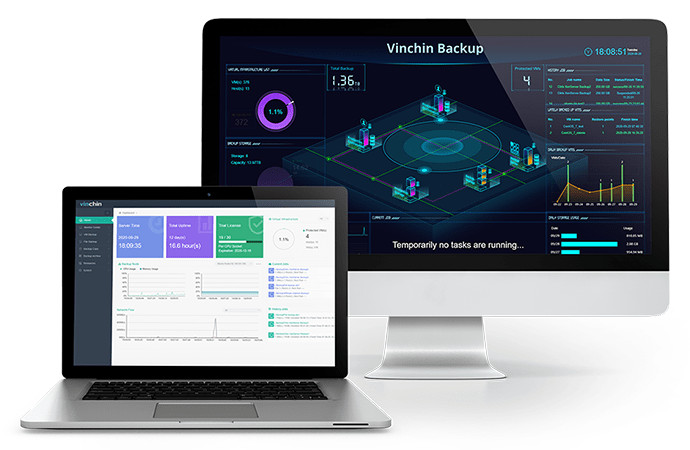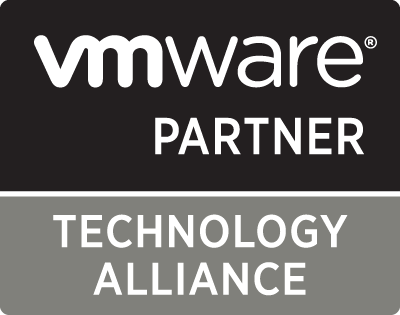-
9 things you should put into disaster recovery checklist
-
Backup and recover VM with Vinchin Backup & Recovery
-
Sum Up
Information technologies have helped companies with advanced facilities and software like physical server and all kinds ofbusiness systems. When technologies connect the world and speed business, business protection should not be ignored.
Company’s datacenter is the heart of IT environment and it is worth having an integrated disaster recovery plan for it. After you investigate the IT environment and compile a detailed disaster recovery plan, you still need a checklist to make it able to be smoothly executed and let you have a chance to improve your plan.
9 things you should put into disaster recovery checklist
There are some suggestions for you to check your disaster recovery plan.
1. Inventory of hardware and software
Hardware is the base of IT environment. No matter for fixed asset management or disaster recovery plan compilation, it is always necessary to inventory the hardware in company.
Knowing the condition of hardware makes you replace the old and broken ones in time to prevent a later IT issue and also know whether it is necessary to procure new equipment.
Inventorying the hardware also makes you know how much backup equipment you have so you can quickly find them when necessary.
2. Risk assessment
Risk assessment is a must in the checklist since you are creating a disaster recovery plan. Knowing the potential risks in IT environment makes you clear about how IT environment will be damaged in an emergency and have the clue to prepare solutions for different problems.
Risks might include natural disasters like fire, floods, and hurricanes, and human errors like accidental deletion, nonstandard operation, etc.
Never underestimate external cybersecurity risks. Production data is precious to company so the attackers would like to steal the data and damage the IT environment to demand a ransom.
3. Business impact
Since the plan is for recovering business from disaster, it is necessary to know the impact on business so you can have a psychological preparation for it.
If there is just a planned power outage and you get the notification in advance, there might be zero impact on your business but if it is an unplanned power outage, it would be a devastating disaster for business continuity, and the outcome is loss of reputation and further business.
4. RTO and RPO
Disaster recovery plan is not perfect and you need to face the loss in business caused by disaster. However, a disaster recovery plan can help reduce the impact of disaster. There are two important parameters in a disaster recovery plan, RPO and RTO.
RPO, Recovery Point Objective, means you can recover how much data from a disaster also means how much data loss you can accept. To recover as much data as possible, you should backup data as frequently as you can but if can accept some data loss, you will save a lot of resources.
RTO, Recovery Time Objective, means how soon you can recover business system from a disaster and also means how long you and the customers would like to wait for recovering the business system. To reduce RTO, there should be advanced technology in your disaster recovery solution like Vinchin’s Instant Recovery, to recover business system as soon as possible.
Sometimes, RPO and RTO are required by regulations so you should also check whether they are compliant with the regulatory.
5. Disaster recovery solution
Solution is very important and it might include daily preparation like equipment maintenance and data backup and the procedures to recover business systems.
It would be better to have an exhaustive description for problem solving that would help a man with little professional knowledge quickly recover the problematic system.
6. Personnel responsibility
After the disaster recovery plan is compiled, it should not be just uploaded to the cloud for others’ downloading, but should be also managed by a team with professional knowledge.
There should be a leader and the other members who are trained with expertise and this team will guarantee that the business system can be recovered as wished when it is necessary.
7. Contact list
In case users are in a tight corner, a contact list should be handed out to them to let them find a professional member to help them out.
8. Secondary site
If the budget is adequate, it is recommended to build a secondary site for disaster recovery. Large enterprises will often build a secondary site because it will help recover data when the primary datacenter suffers severe damage.
If you don’t want to build a secondary site, it is still recommended to at least send a backup copy to the cloud for double insurance.
9. Test
Before you send the document to everybody, don’t forget to test the plan in case of any mistakes when solving the problem during an emergency.
Backup and recover VM with Vinchin Backup & Recovery
If you are looking for a disaster recovery solution for VM, you can try Vinchin Backup & Recovery, supporting VMware vSphere, Hyper-V, XenServer, XCP-ng, RHV/oVirt, Oracle Linux KVM, OpenStack, etc.
Backup system deployment will become simple with agentless backup. Vinchin Instant Recovery and Cross-Platform Migration make you use VM backup to recover a failed VM in 15 seconds and migrate VM between different hypervisors.

Vinchin Backup & Recovery has been selected by thousands of companies and organizations and you can also start to use this powerful system with a 60-day full-featured free trial. Just click the button to get the installation package.
Sum Up
Companies are using more and more business systems now and managers should also know the important of business continuity protection.
To make the plan suitable and workable, you need a disaster recovery plan checklist to ensure everything necessary is included in the plan. Just refer to the 9 things mentioned in this post and combine them with the actual situation to create an excellent plan for your IT environment.
If you are looking for a disaster recovery plan for VM, don’t miss the free trial of Vinchin Backup & Recovery.
Share on:





















